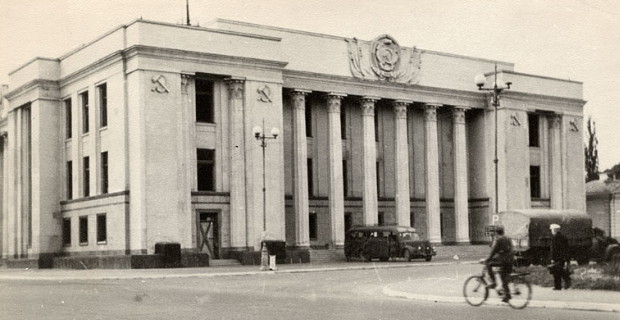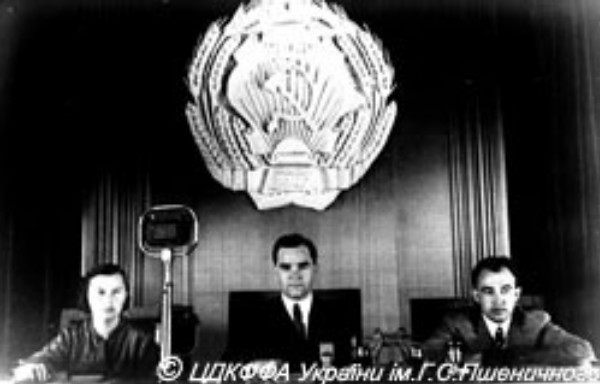Supreme Soviet of the Ukrainian SSR
Supreme Soviet of the Ukrainian SSR (Verkhovna Rada Ukrainskoi RSR). The highest governing and legislative body in Soviet Ukraine. It was created according to the Constitution of the Ukrainian Soviet Socialist Republic of 1937 in place of the All-Ukrainian Congress of Soviets on the model of the Supreme Soviet of the USSR. The Supreme Soviet had the authority to change the constitution of the Ukrainian SSR, to approve state plans for the economic and political development of the country, to enact legislation, to change administrative territorial borders, and to establish the budget. It also elected the Council of Ministers of the Ukrainian SSR and accepted its reports, and appointed judges to the Supreme Court of the Ukrainian SSR. The Supreme Soviet initially met only a few weeks a year; it elected a Presidium, consisting of a chairman, 3 deputy chairmen, a secretary, and some 20 members, to act in its place between sessions. The Presidium was delegated almost complete authority by the Supreme Soviet, although some decisions had to be ratified later by the entire Soviet. The chairman of the Presidium (and of the Supreme Soviet) was legally the head of state.
Deputies were elected on the basis of universal suffrage by all citizens of Ukraine over the age of 18 (earlier, 21) through direct, secret balloting. The number of deputies increased from 435 (in 1955) to 650 (in 1977) but subsequently decreased to 450 (in 1990). Deputies were elected from electoral districts, each with approx 110,000 inhabitants. The Communist party exercised total control over the Supreme Soviet. Only the Party or organizations it controlled could nominate deputies for elections, which were not contested, and the Party faction in the Soviet dominated the proceedings. In response to the reforms initiated by Mikhail Gorbachev, however, a new electoral law was passed by the Ukrainian Supreme Soviet in November 1989. It liberalized somewhat the nominating procedure (although Party-dominated local electoral commissions retained inordinate power) and permitted multiple candidates to stand for elections. Despite many irregularities and official interference, over 120 supporters of the Democratic Bloc, a loose coalition of some 40 groups opposed to the Communist party, were elected in March 1990. By 1991 the Supreme Soviet had emerged as the most important forum of the struggle for democratic change in Ukraine. After the collapse of Soviet rule in 1991, the Supreme Soviet was renamed the Supreme Council of Ukraine.
Borys Balan
[This article originally appeared in the Encyclopedia of Ukraine, vol. 5 (1993).]


